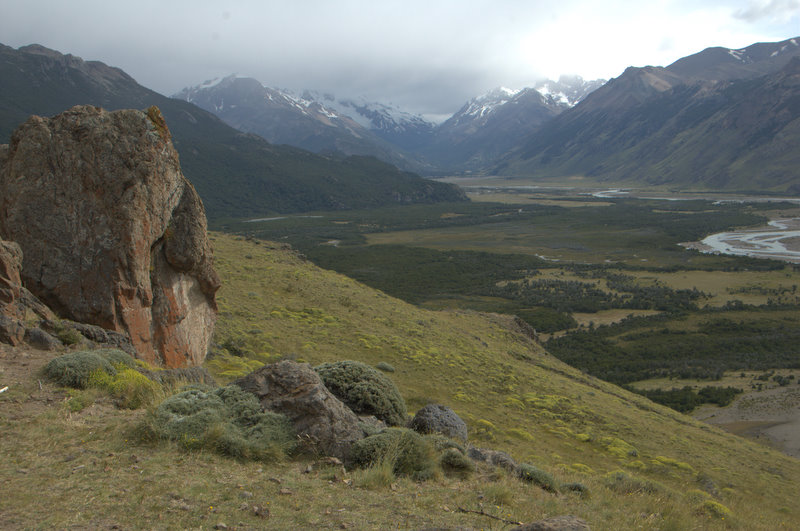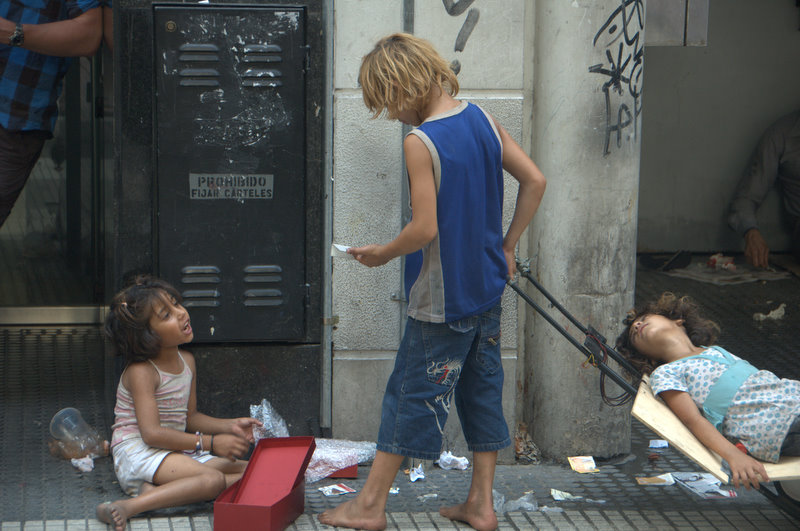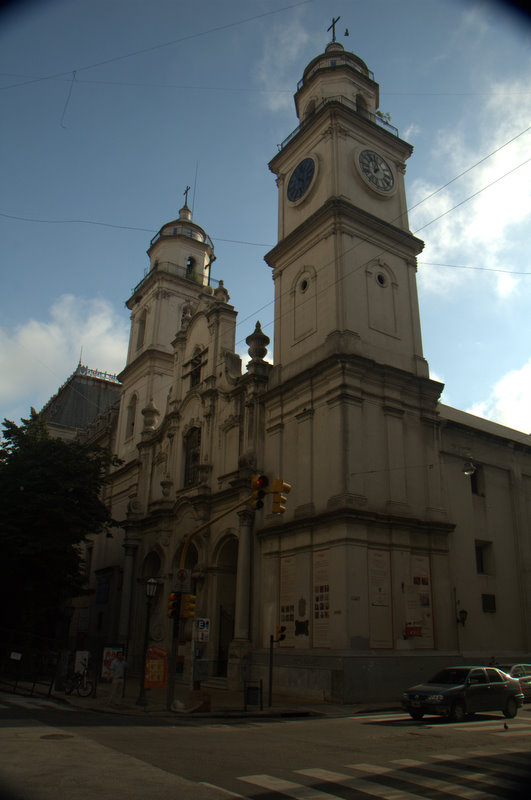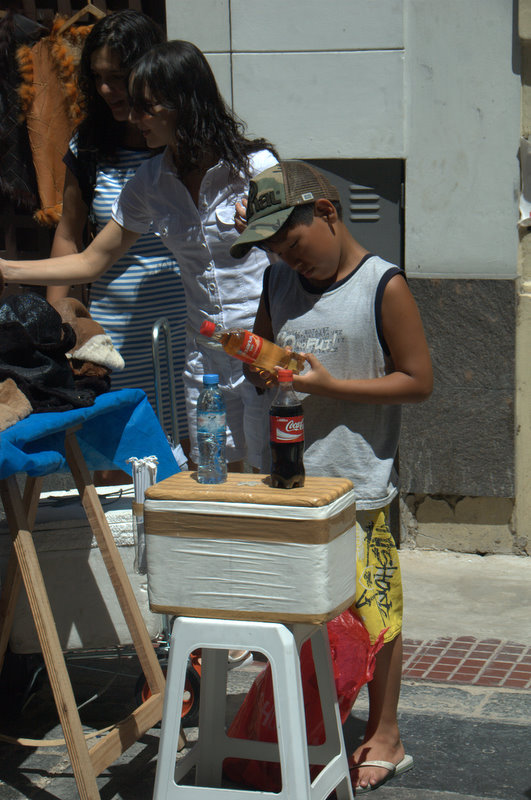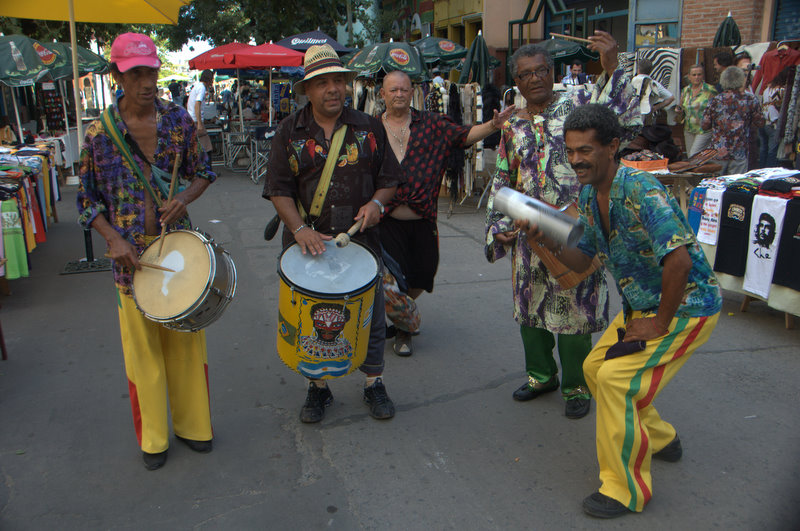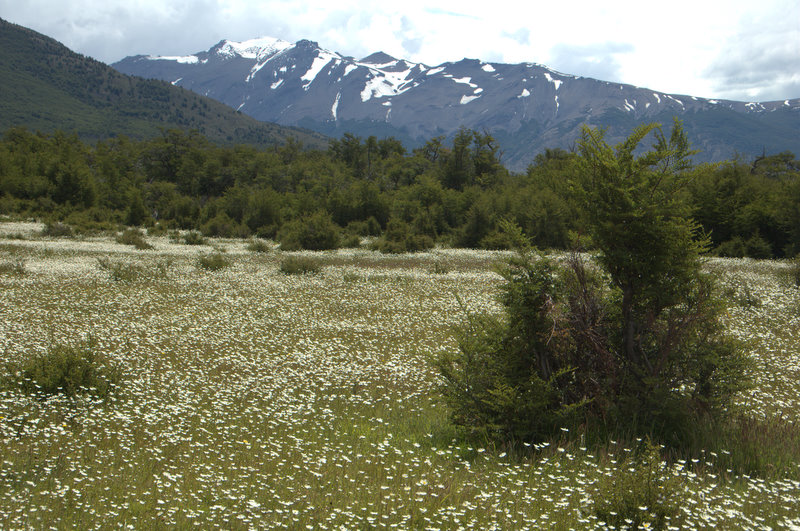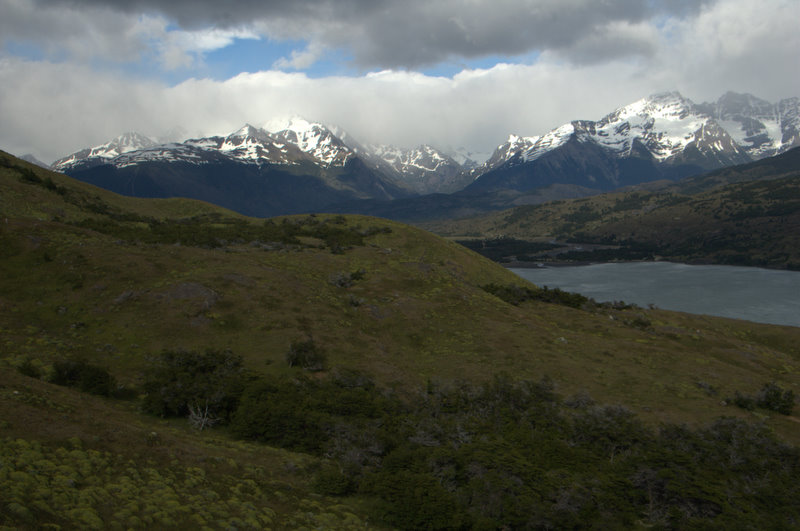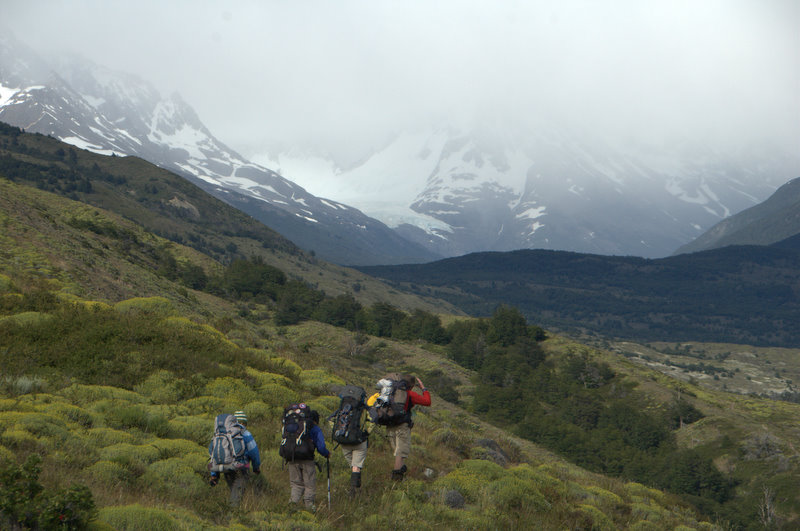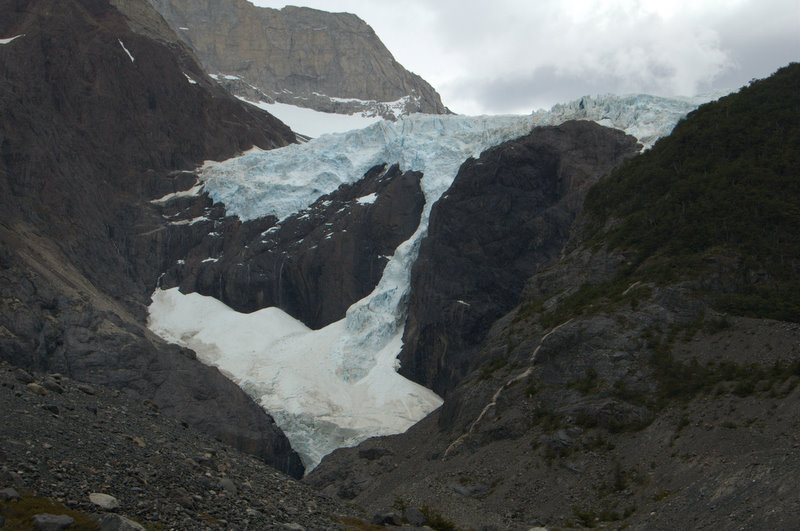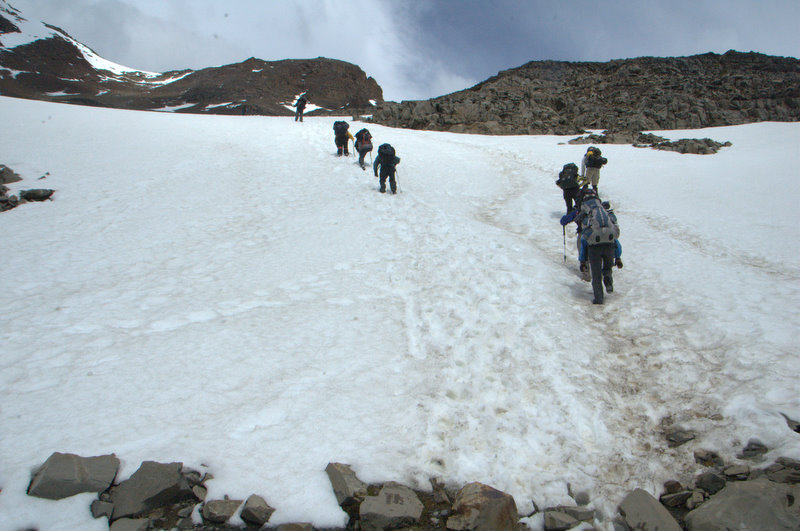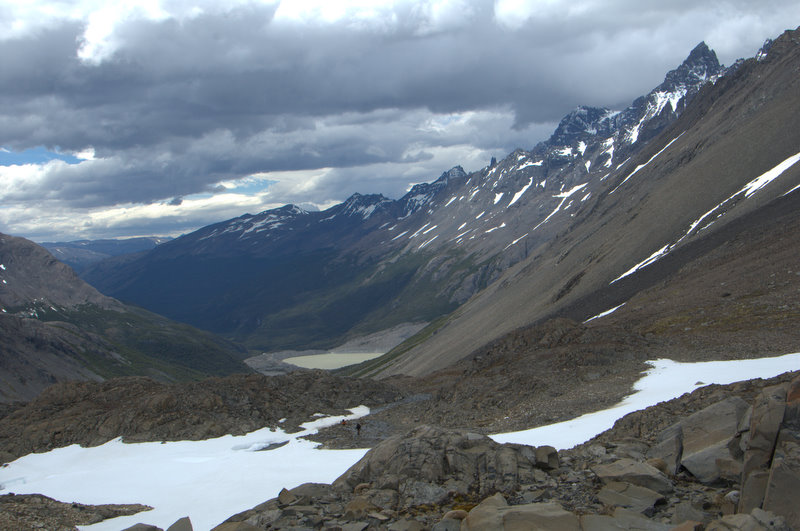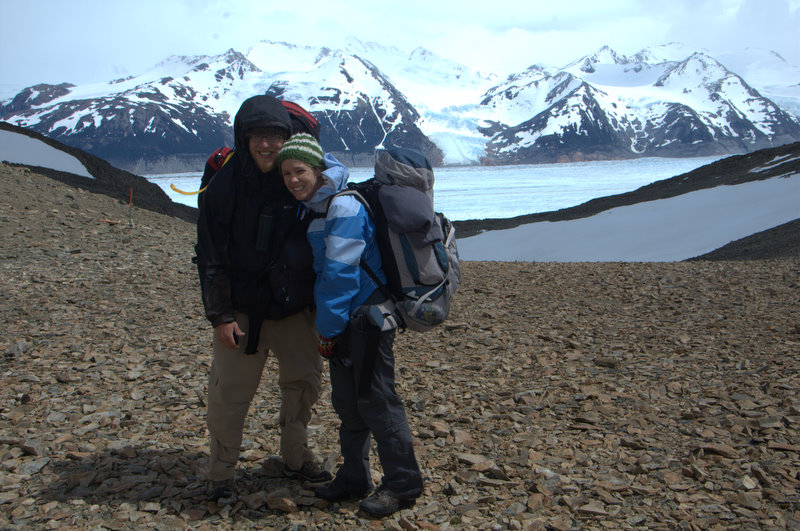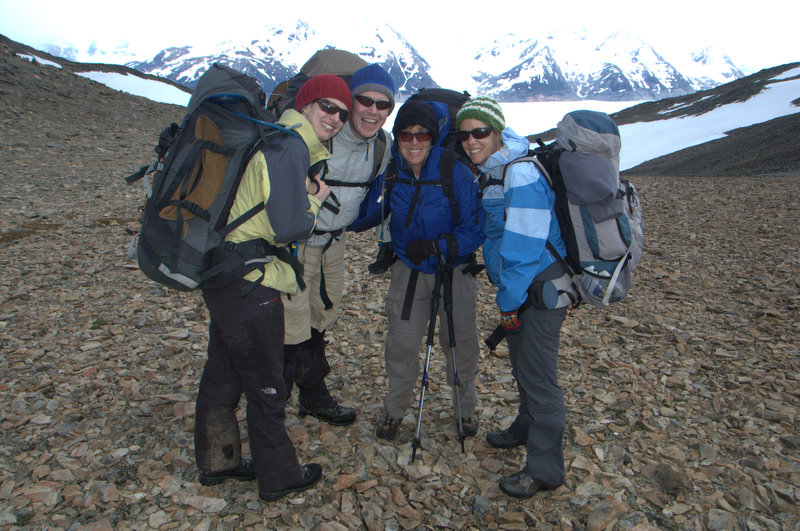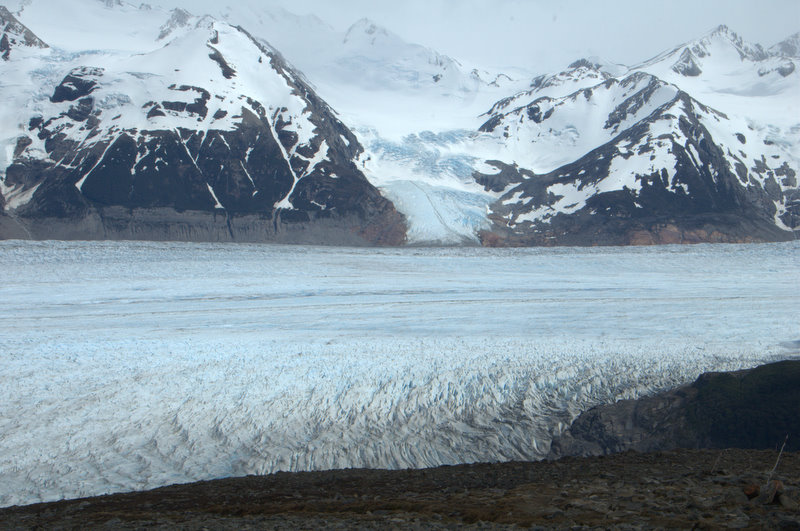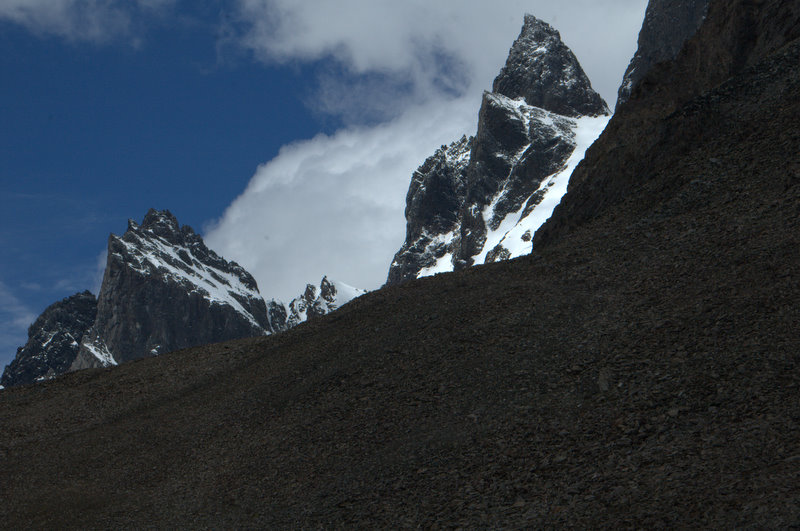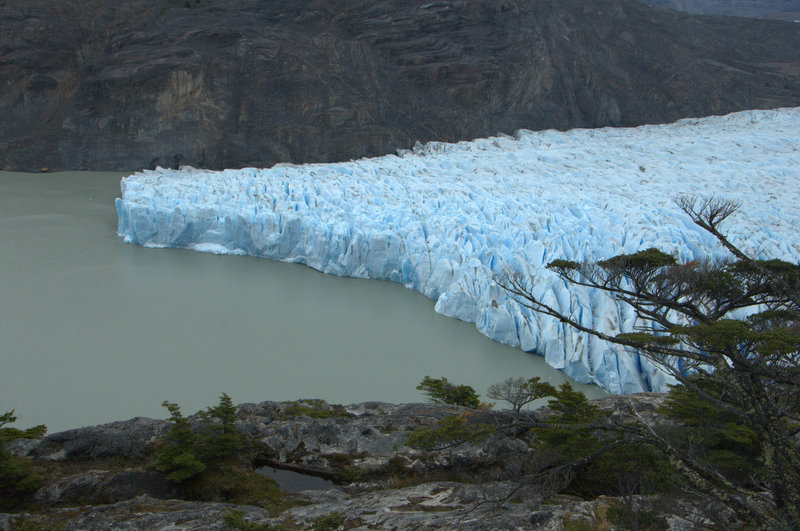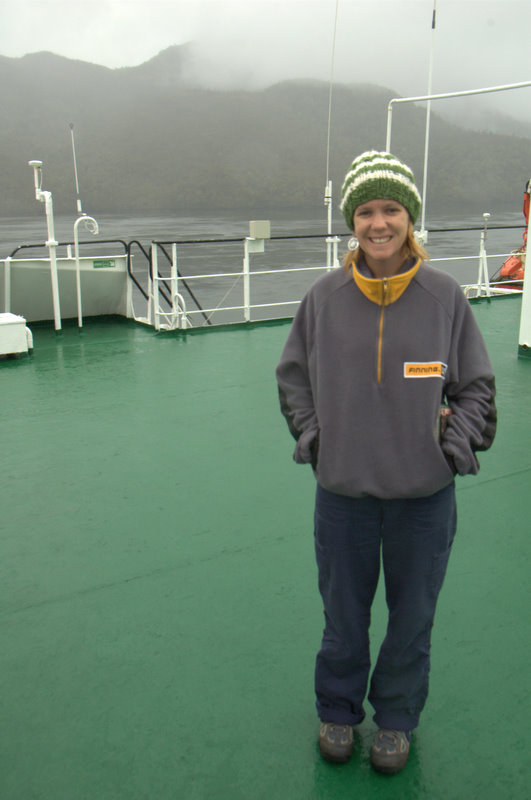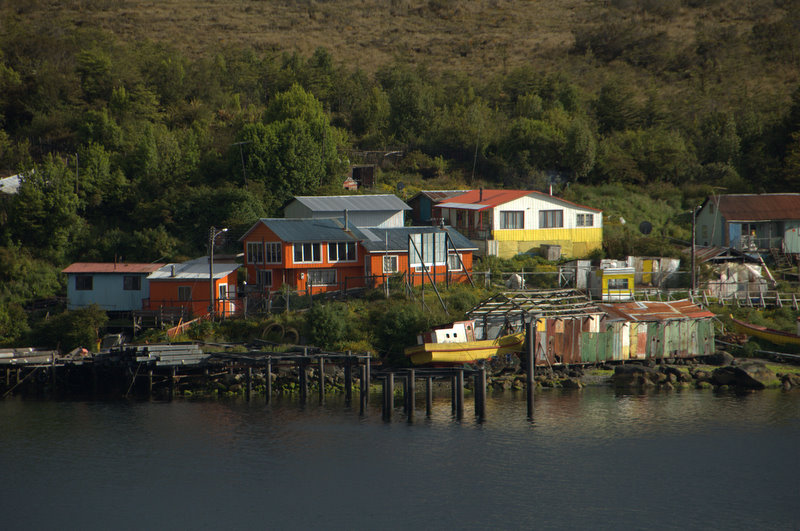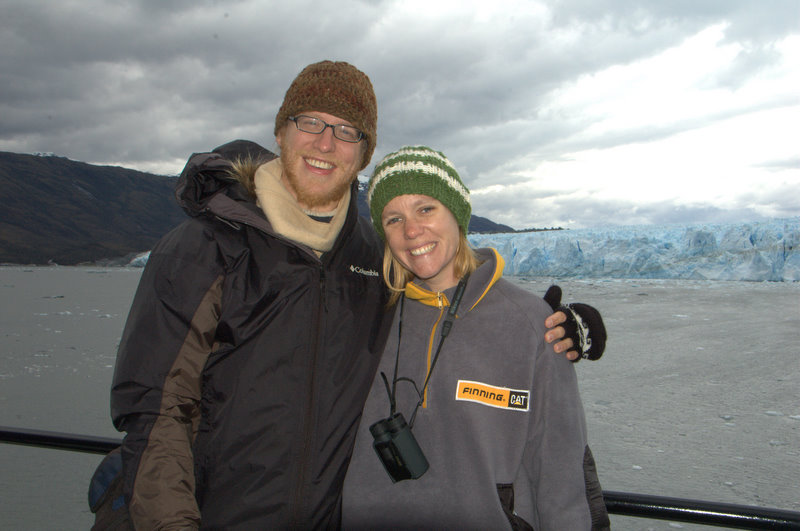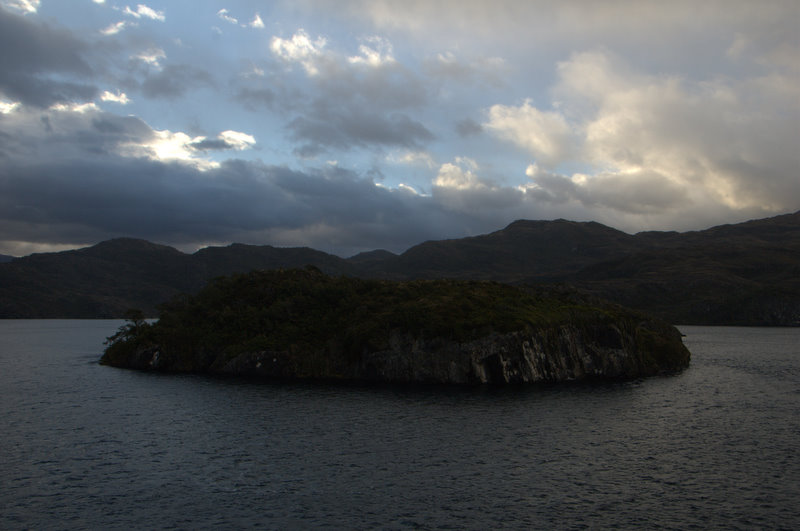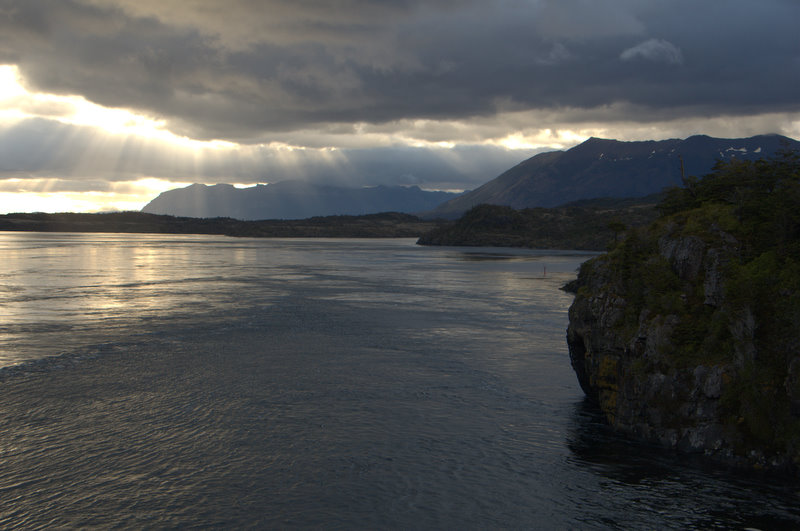We´re back in Puerto Natales for a day of relaxation and reorganization, after spending eight days trekking in the nearby Parque Nacional Torres de Paine. What an incredible week it was!
We started out last Tuesday morning, catching a bus from Puerto Natales that in the traditional South American fashion was a half hour late and then circled town a couple more times picking up various hikers rather than departing from a central location. Two hours through some very bleak territory later, we arrived at the park, where knowing that we would have to pay $30 each to enter the park (after paying $30 each for the bus ride) didn´t make the transaction less painful. From there, it got better and better.
We started our hike from Laguna Amarga with a woman we met on the Navimag ferry, a 63-year old fellow Coloradoan called Talie (you can see a link to her blog on the right side bar). We set out on the Circuit, going in the counter-clockwise direction (see a map here). Torres de Paine has over 200 km of trails, but the most famous is the W, which takes hikers along the front side of the massive towers, and up two valleys for close views of the peaks, hence the name. The Circuit includes the W as well as continuing along the backside of the peaks. This section of the park is equally beautiful as its famous counterpart, but has fewer people given the total distance as well as much fewer amenities. The fact that it was far less crowded was the great attraction, and so we set out, covering nearly 15 km that first day up to the first campground, Campamento Seron. This little campground was beautifully situated in a large field of white daisies, and though a harsh wind blew throughout the night, it was a favorite campground of ours. We also met up with a British couple we´d met on the ferry, Dan and Annabelle, who had started earlier but were camping at Seron. Our hiking group was thus complete.
The next day was not as kind as that first day. We walked about 30 km that day, more than 18 miles, with our bags fully packed with food for the trip. Consider that I arrived in Chile out of shape, and then had a week in Santiago, a week in Loncoche, and then five days en route to Torres de Paine where I had very little activity; needless to say, it was an exhausting day. We first came to the Refugio Dickson, which sits near a glacier and has a pleasant little meadow to lie in the sun. The trip from Seron to Dickson was long, but mostly flat and very beautiful, and if we´d chosen to to stay at Dickson, it would have been a perfect day of hiking. We chose to continue to the next campground, Los Perros, because though it was only 10 km away, it was a stopping point, as it sat at the bottom of the Circuit´s pass, the Paso John Gardner. It was recommended that we take on the pass starting in the morning, when its snowfields would be firm; thus we took on 30 km to reach Los Perros that evening.
Leaving Refugio Dickson had us start up a steep valley almost immediately. Having already walked 19 km, that had us staggering quite quickly. From there, it was more of a mental game, keeping our feet going. We climbed up and up, and eventually came to a bridge that seemed to fit a description of one that was only 15 minutes from Los Perros. A quarter hour later we realized that not only was it not that particular bridge, but we had a full hour ahead of us, and we had to climb up a huge pile of glacial rock to boot. At one point, on our final break, Jess and I were curled up fetal positions, ready to spend the night there on the rocks if necessary. Further on, as we came up to one really amazing glacier that was squeezing through a little gap in a rock face, a pale green lake below it, and a rock debris field all around it, there was just a sense of palpable isolation and desolation. A terrific Patagonian wind howled against us, and it seemed that we were at the end of the world (which in a sense we were the entire trek). Just when it seemed like I´d have to lay down on the rock field and stay the night there, we staggered into Los Perros, an equally bleak campground but such a beautiful sight to behold. We set up our tent, cooked a bit of pasta, and collapsed in our sleeping bags.
Climbing the pass the next morning was an absolute highlight of the trek. We climbed through a bog out of Los Perros, which gradually became alpine scrubland, and eventually changed to windswept rock fields and snowfields. We slowly made our way up, thankfully with little wind, and around noon we crossed through the pass. There, on a football field-sized flat area, against a roaring wind that finally had found us, we looked down on the magnificent Glacier Grey, which stretched out before us like blueish-white ocean. The view of looking down on such a glacier was a first for myself and Jess, and it was more breathtaking than the wind. We took our shots and then retreated down the long descent to the next camp, Campamento Paso.
The next day was the Ladders Day, which took us on a route rumored to have steep 50-foot ladders dropping in and back up out of ravines. It was a short day in distance, but we figured we might need plenty of time for the ladders. We found the two ravines with a ladder each, but that was rather anticlimatic, as they were quite short and easy to climb. The walk itself along Glacier Grey, which took us down to the front of the glacier near Refugio Grey, was really the highlight of the day; we consistently had this massive, almost surreal glacier to our right side as we hiked along. It was a beautiful and fairly easy day of walking; at the refugio we found hot showers and were able to clean ourselves for the first time in four days, though the cold water was gone by the time I took my shower and the water too hot to rinse off the soap, leaving me either the cleanest or dirtiest person in our group, depending on how you think of it. Jess, Talie and I had an expensive dinner at the refugio; being a big piece of turkey, it was the first piece of meat we´d had since our night in Puerto Natales.
The next day was another long day, one of our two roughtly 18 km days. We hiked downhill to the Refugio Peohe, where a boat drops off and picks up hikers wanting only to walk the W and takes them across Lago Peohe to a bus. It was quite a ritzy place given its isolation; going in for some food, I found internet in the lounge which someone had neglected to log off from, and I quickly snuck in to send an email off to our folks to let them know we were doing well. Then we continued on to our campground for the night Campamento Italiano, a rather primitive place that sat at the bottom of the first valley of the W route, Valle del Frances. That allowed us to get up the next morning and head up the valley without our packs to the end of the trail for a good view of some of the iconic towers. Along the route were a couple of glaciers that hung tenaciously from the walls of the valley, occasionally loudly groaning with tension and giving us hope of seeing some massive wall of ice calve off and drop into the valley. Once back at our tents, we loaded up and went a further 5.5 km to the Refugio Los Cuernos.
Spending the night there allowed us to make another long trek across the 11 km front of the W to the eastern point of the W, which plunged into the Valle Ascencio to the Mirador Torres, the viewpoint right at the base of the majestic Torres Del Paine. These massive spires of stone were certainly worth the hike, but what a hike it was. We ate the kms up getting along the front, going about 14 km to the Refugio Chileno. We felt pretty good at that point, and we´d been told that it was a simple meander up the river to our final camp, the Campamento Torres, by some Aussies. Those guys were either cruel or totally full of crap, because that last 3.5 km was no meander but for me, a step-by-step struggle up and down the sides of endless ravines. Eventually we arrived in the camp, weary but happy, and set up our tents. Before we had dinner, we set out for the Mirador Torres, an additonal kilometer straight up. We found ourselves some of the last folks of the day there, and enjoyed the views as well as occasional bursts of sunlight until a snowstorm and the blustery wind pressed us back down to our tents. There, we´d planned on a night of cardgames, but that campground was the coldest we´d been to, and once we got bundled up in our sleeping bags, wrapped in all the layers we had, no one was willing to face the cold again for games.
The next morning Dan and Talie headed back up to the Mirador at 4:30 am to try to catch a chance at seeing the glow of the sunrise off of the towers, but myself, listening to the snow pellets hitting the side of the tent, I opted to stay in my relatively warm sleeping bag, though it had been a very cold night. After breakfast, we happily left the cold campground and retraced our tracks back to the Refugio Chileno, and then on down to the Hosteria Las Torres, passing crowds of day hikers making their way from the ritzy hosteria to try to see the towers (a long, steep 18 km day hike). By that point my knees were giving me troubles, so I must have looked like quite the character staggering down the slope, wearing the same pants that I had started in eight days before, dusty and windblown. At the hosteria, after being in the backcountry for more than a week, I found myself quite shocked when they tried to charge $4 for a Snickers and $5.50 for a hot chocolate; I had to leave, before they started charging me to breath the air.
We eventually arrived back at Laguna Amarga, where we calculated from the large map there that we´d traveled a total distance of 136 km, which is about 82.3 miles. We had set out on a Tuesday and returned the next Tuesday at almost exactly the same time of day, roughly at noon. We waited for our bus, which brought us back to Puerto Natales. After sorting out our hostel situations and taking much needed showers, we re-gathered for a celebratory dinner of big hunks of meat and plenty of beer, which I´d been thinking about since the second day of trekking.
So, the trek has been a true highlight of Jess and I´s entire journey. We saw some of Chile´s finest, most enchanting landscapes, and even better, we had some great hiking partners. Dan, Annabelle, and Talie really helped us keep going, and made this trek, which was Jess´s first, a great experience.
Until next time, be safe.

 Talie & Us On Beer Tour, Punta Arena (Chile)
Talie & Us On Beer Tour, Punta Arena (Chile) Glacier & Lake, First Campsite
Glacier & Lake, First Campsite Jess Hiking, Parque Los Glaciar
Jess Hiking, Parque Los Glaciar Aaron Hiking, Parque Los Glaciar
Aaron Hiking, Parque Los Glaciar Clouds Clear From Fitz Roy, Campsite 2
Clouds Clear From Fitz Roy, Campsite 2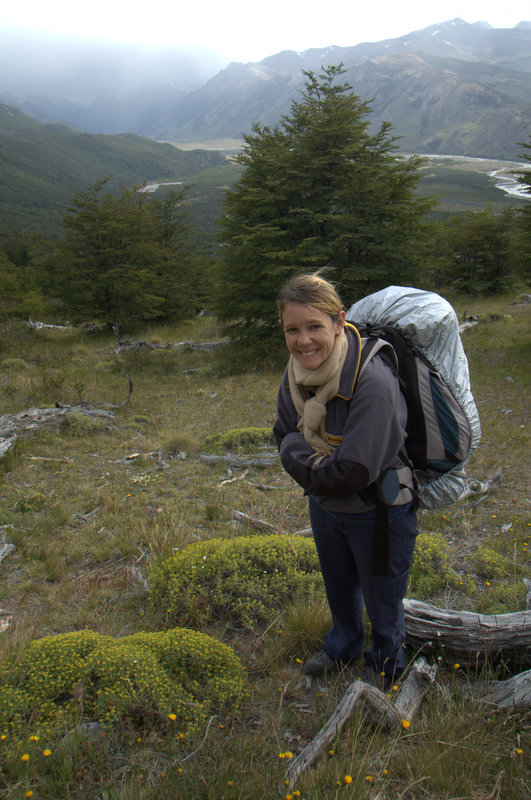 Jess Hiking Out In Cold Weather
Jess Hiking Out In Cold Weather Jess & Aaron, Parque Los Glaciars
Jess & Aaron, Parque Los Glaciars Jess & Aaron, Parque Los Glaciars
Jess & Aaron, Parque Los Glaciars White Horse Near El Calafate, Argentina
White Horse Near El Calafate, Argentina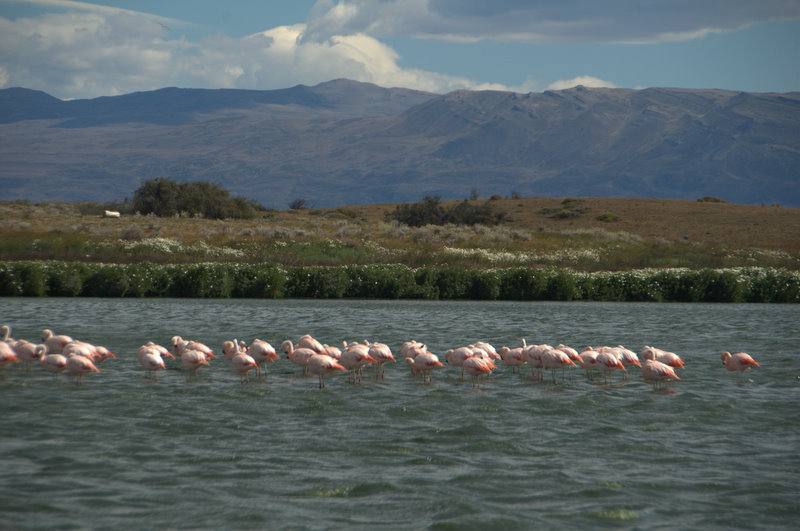 Flamingos In Lagoon, El Calafate
Flamingos In Lagoon, El Calafate Statue In Cementerio de la Recoleta
Statue In Cementerio de la Recoleta Eva Peron´s Marker, Recoleta, BA
Eva Peron´s Marker, Recoleta, BA Intricate Design, Recoleta, BA
Intricate Design, Recoleta, BA Doctor Scene On Crypt, Recoleta, BA
Doctor Scene On Crypt, Recoleta, BA Crypt For Family Drunk, Recolta, BA
Crypt For Family Drunk, Recolta, BA Sunday Market Wares, San Telmo, BA
Sunday Market Wares, San Telmo, BA Fruit Stand Near San Telmo Market, BA
Fruit Stand Near San Telmo Market, BA





